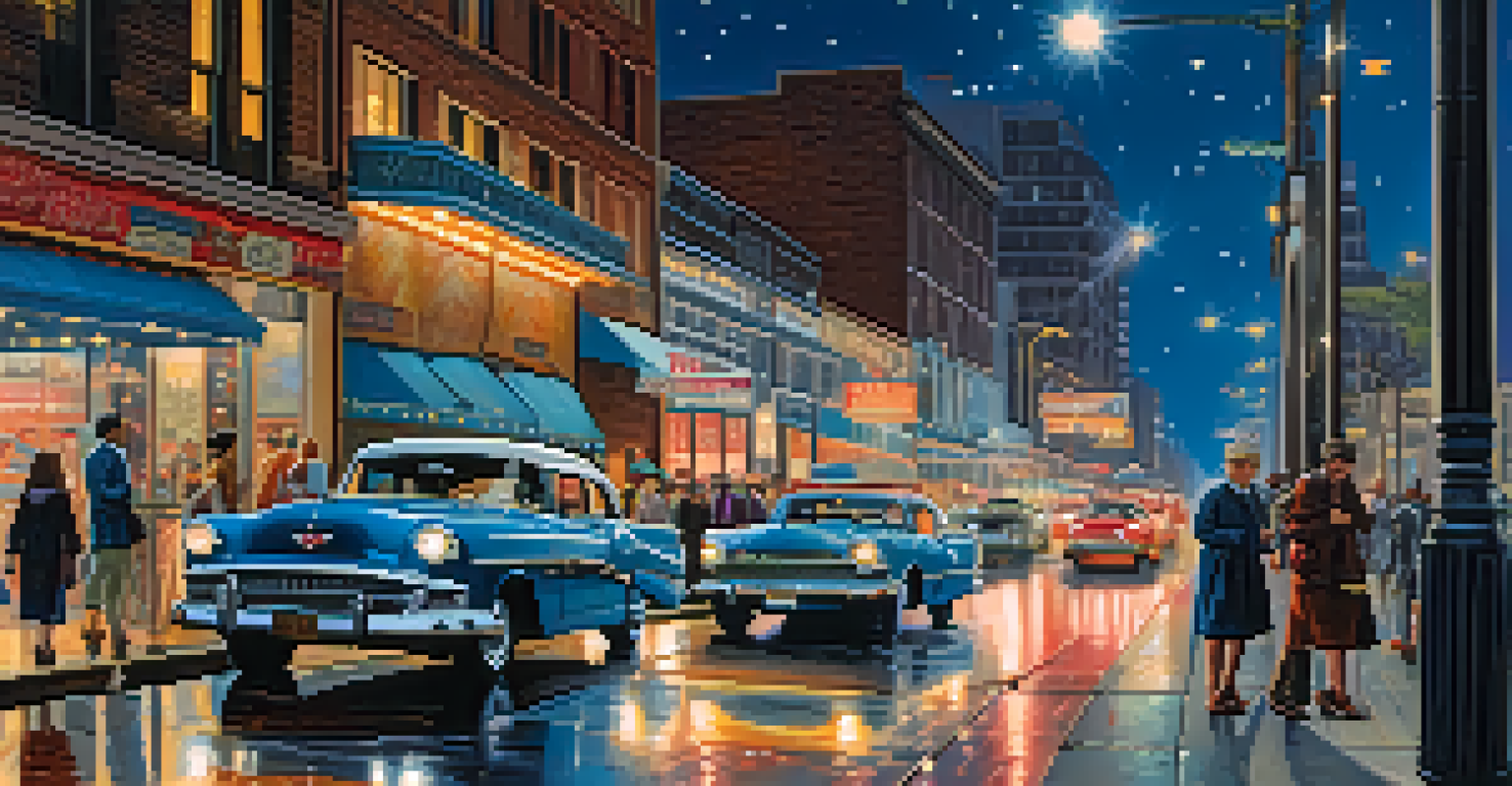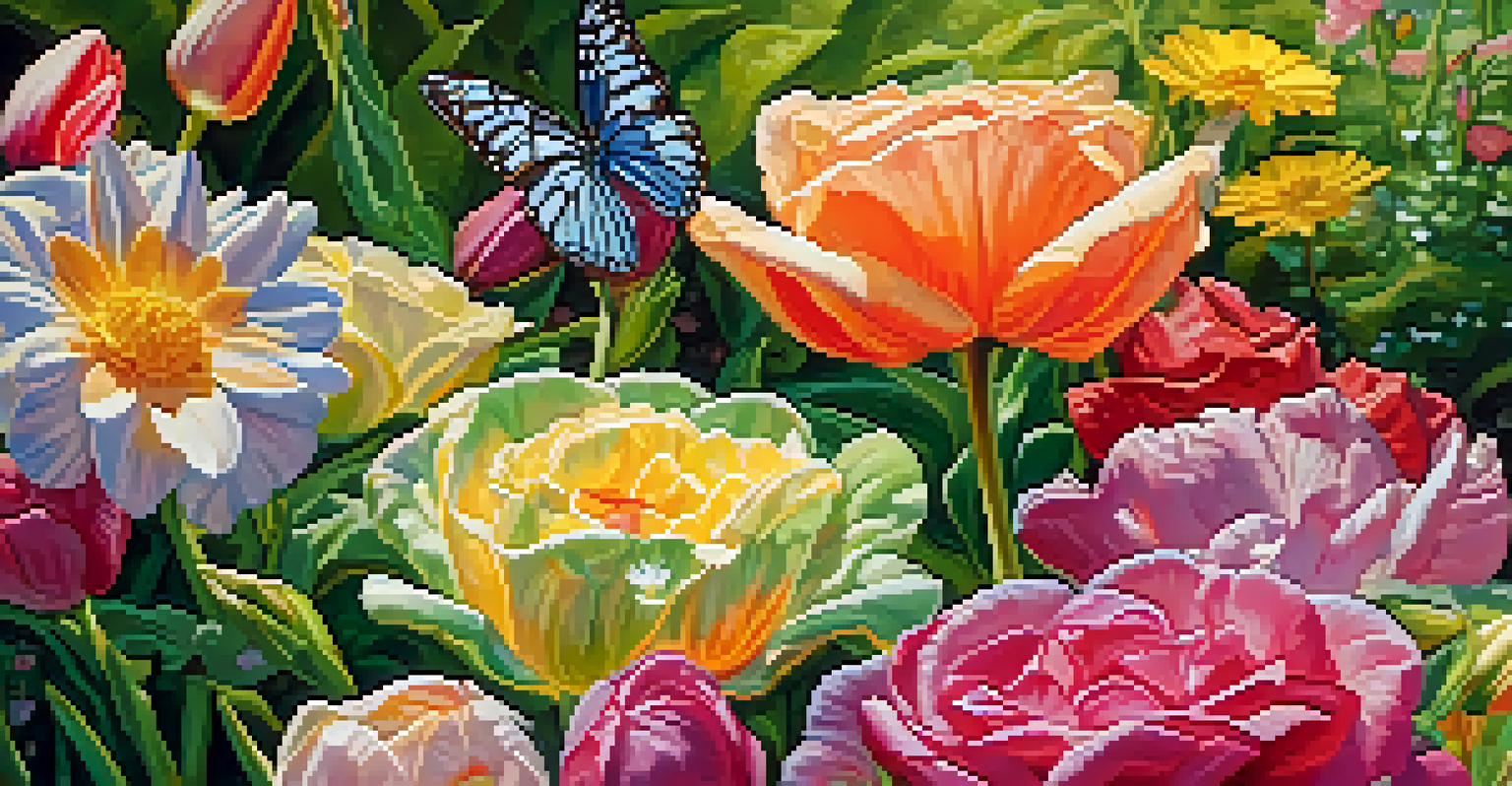Creating an Engaging Theme for Your Art Exhibition

Understanding the Importance of a Strong Theme
A compelling theme is the backbone of any art exhibition. It sets the tone and gives visitors a focal point, guiding their experience as they navigate through your artwork. Think of it like the plot of a great novel; without it, the story can feel disjointed or confusing.
Art is not what you see, but what you make others see.
Moreover, a well-defined theme can spark curiosity and invite deeper engagement. For example, an exhibition centered on 'Nature's Resilience' can inspire conversations around environmental issues, making art a catalyst for change. This emotional connection is vital for leaving a lasting impression.
Ultimately, the right theme creates a cohesive narrative, transforming your exhibition from a simple display into an immersive experience. It’s about crafting a journey that resonates with your audience, drawing them in and encouraging them to explore the art on display.
Brainstorming Ideas That Resonate
When it comes to brainstorming themes, think about what inspires you and your artwork. Reflect on personal experiences, societal issues, or even abstract concepts that resonate deeply with you. This initial brainstorming phase is all about letting your creativity flow without constraints.

Consider gathering a group of trusted friends or fellow artists for a brainstorming session. Sharing ideas in a collaborative environment can lead to fresh perspectives and innovative themes you might not have considered on your own. Plus, this sense of community can add richness to your exhibition’s concept.
Theme Sets Exhibition's Tone
A strong theme guides visitors' experiences and creates a cohesive narrative throughout the exhibition.
Once you have a list of potential themes, take a moment to evaluate which ones truly resonate with your artistic vision and the message you want to convey. Narrowing down your options will help you focus your energy on creating an impactful exhibition that speaks to your audience.
Researching and Refining Your Chosen Theme
After selecting a theme, it's essential to do some research to deepen your understanding. Explore how other artists have approached similar themes, and consider what worked and what didn’t. This insight can provide valuable context and inspiration as you refine your vision.
A theme is a story waiting to be told, a journey waiting to be embarked upon.
Additionally, think about the historical or cultural significance of your theme. For instance, if your theme revolves around 'Urban Life,' investigate how urban environments have influenced art across different eras. This knowledge can enrich your exhibition and provide layers of meaning for your visitors.
As you refine your theme, ensure it aligns with the artworks you plan to showcase. The theme should enhance the audience's connection to the art, creating a harmonious relationship between the pieces and the narrative you're constructing.
Incorporating Multimedia Elements
In today's digital age, incorporating multimedia elements can elevate your exhibition. Think about how video installations, soundscapes, or interactive displays can enhance the theme and engage your audience on multiple sensory levels. For example, a theme on 'Memory' could feature audio recordings of personal stories that complement the visual art.
These elements not only attract attention but also invite deeper contemplation. By offering varied ways to experience the theme, you create an inclusive environment that caters to diverse audience preferences. It’s about making art accessible and relatable to all.
Multimedia Enhances Engagement
Incorporating multimedia elements can elevate the exhibition by engaging audiences on multiple sensory levels.
However, be mindful not to overwhelm your audience. Choose multimedia elements that complement rather than overshadow your artwork. The goal is to create a cohesive experience where every aspect supports the overarching theme.
Designing Your Exhibition Space Effectively
The layout of your exhibition space plays a crucial role in how the theme is perceived. Consider the flow of movement as visitors navigate through the artworks. A well-designed space can guide them through your narrative effortlessly, enhancing their overall experience.
Use lighting, colors, and materials that reflect your theme. For instance, if your theme is 'The Ocean’s Depths,' deep blues and soft lighting can create an immersive underwater atmosphere. This attention to detail helps reinforce the theme visually and emotionally.
Also, think about how the arrangement of artworks can tell a story. Group pieces that share similar themes or messages to create a dialogue between them. This not only fosters engagement but also encourages visitors to reflect on the connections between different works.
Promoting Your Theme to Attract Visitors
Once your theme is set, it’s time to get the word out! Utilize social media platforms, local art communities, and press releases to generate buzz. Share sneak peeks of your artwork and thematic elements to pique interest and stir excitement among potential visitors.
Consider hosting pre-exhibition events or workshops that align with your theme. These can be excellent opportunities to engage your audience, provide deeper insights into your theme, and encourage attendance at the main event. For instance, a workshop on 'Sustainable Art Practices' can tie back to an eco-themed exhibition.
Gather Feedback for Growth
Collecting feedback after the exhibition helps refine future projects and improve the overall artistic journey.
Don't forget the power of storytelling in your promotions. Share the inspiration behind your theme and the journey of creating your exhibition. Personal anecdotes can resonate with potential visitors, drawing them in and making them feel connected to your art even before they step through the door.
Gathering Feedback and Reflecting on the Experience
After your exhibition concludes, take the time to gather feedback from visitors. This can be done through surveys or informal conversations. Understanding how your theme resonated with the audience can provide valuable insights for future exhibitions.
Reflect on your own experience as well. What aspects of the theme and exhibition design worked well? Were there elements that fell short of your expectations? This reflection is essential for growth and will help you refine your approach for upcoming projects.

Remember, every exhibition is a learning opportunity. Embrace both the successes and the challenges, as they will inform your artistic journey. With each experience, you'll refine your ability to create engaging themes that captivate and inspire your audience.